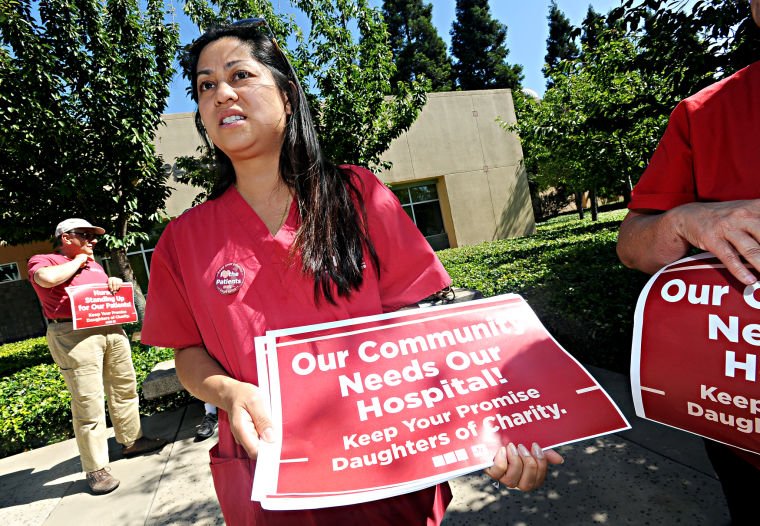
Gilroy’s three biggest public employers have amassed more than $183 million in unpaid pension liabilities. That’s likely more than ever, and a figure that, absent major reform, will grow and siphon budget funds from essential public services, say officials and pension experts.
In Gilroy, 23 city pensions exceed $100,000 and more than 60 exceed $70,000, according to the website, transparentcalifornia.com.
Statewide, greater amounts of cities’ general fund dollars than ever go into employee retirement accounts, according to Robert Fellner of the nonprofit group Transparent California.
“The big factor is the soaring costs. Paying for public retirees has never cost taxpayers more,” Fellner said.
The city’s unpaid pension liability is $66 million and Gavilan Community College is at $27 million, according to Fellner’s group.
“I am worried that this will not be sustainable for cities,” said LeeAnn McPhillips, Gilroy’s Director of Human Resources and Risk Management.
Former police chief Gregg Giusiana is tops on Gilroy’s pension list at nearly $161,500. He also makes $130,000 a year at the nonprofit police academy at Gavilan College.
Former police captain Debbie Moore is No. 2, at $158,768 a year and former city administrator Jay Baksa at $155,113.
AT GUSD, three retirees have $100K-plus pensions, the highest is Maryann Boylan, at $120,329. Sal Tomasello gets $120,303. Both are former principals.
At Gavilan College, retired president Steve Kinsella receives a $149,000 pension. The next highest is former department chair Karen Bedell’s $140,233.
Nearly 30 Gavilan pensions exceed $70,000 and six of those exceed $100,000.
Two Gavilan board members receive pensions, Rachel Perez at $125,606 and Kent Child $86,526.
Among the 35 GUSD retirees with $70,000-plus pensions, two are school trustees. Former assistant superintendent Linda Piceno receives $87,468 and board president and former principal Patricia Midtgaard receives $84,023 a year.
Public employee retirement systems in California are too generous or allow people to retire too early, or both, say critics.
The only way to change that, and protect retirees and public sector employers, is by legislation or court rulings that put more of the burden on employees, perhaps by sharing the cities’ costs.
Taxpayers now pay far more into retirement systems than public workers do—roughly four times more for some Gilroy employees.
And under state law they are also liable for shortfalls in the state retirement systems’ ability to pay, according to Fellner.
That matters because as pension costs rise there’s less to spend on essential city services, he said. The figure is basically the difference between what the city has promised to pay retirees and what it has on hand for payroll needs.
The biggest liability belongs to the city’s largest employer, the Gilroy Unified School District.
It has committed via union contracts to pay retirees $90.6 million. The annual bill for contributions to retirement accounts now amounts to nearly 6 percent of the GUSD budget.
GUSD now pays $7.4 million of its $128 million annual budget, or nearly 6 percent, into CalPERS, the California Public Employees Retirement System and CalSTRS, the State Teachers Retirement System pension accounts, according to Assistant Superintendent Alvaro Meza.
This year, CalPERS lowered expected investment income—its third source of revenue besides employer and employee contributions. That means employers will pay more into the system starting in 2018-19, according to Meza.
“GUSD will spend well over $1.3 million annually on rising pension costs,” he said.
Pension reforms created second tier employee groups, workers hired after January of 2011 or 2013, depending on the reform. Compared to so-called legacy or classic employees, those on the payroll before January 2011, newer workers generally must work more years to collect full pension benefits and in some cases pay more into the system.
However, the City of Gilroy’s contribution has remained at nearly 36 percent of the employee’s salary. Workers pay from about 9 percent for legacy police officers to 12 percent for tier 3 police officers.
Retirement deals among all employee groups range from the best, for legacy cops, which is 3 percent at age 50, to 2.7 percent at age 57, the latter with a 12 percent employee contribution.
In the legacy example, it means the pension amount is equal to 3 percent of the officer’s highest annual salary multiplied by the number of service years.
Typically, the formula produces pensions at 90 percent of their highest yearly salary, according to McPhillips.
Other employee groups, firefighters and everyone else, have similar plans, but police have the most generous, she said.
But the tier system has put Gilroy at a disadvantage for hiring police recruits because it’s not as competitive as other cities, according to Corporal Brian Dutton, president of the Police Officers Association.
“We’ve been sitting on six vacancies for months and we’re having a difficult time hiring,” he said.
Not only is police work less attractive because of all the violence these days, “The second tier class of employee has made us less marketable,” Dutton said.
Another factor is longevity, according to Santa Clara County Assessor Larry Stone, a long-time advocate for pension reform.
People live into their 80s and 90s, which can mean they will be owed pensions for decades, he said.
“You cannot finance 40 years worth of pension benefits with 30 years of work, the math simply does not work,” he said.
He, McPhillips and Fellner said that it will take years before cities see savings from reforms enacted during the recession because legacy employees will outnumber those in lower tiers for a long time.
In the meantime, more immediate reform is critical to the health of the retirement system, agencies and public sector employers who pay much of the costs, they said.
Another problem is that critical funding of retirement liabilities, particularly for the huge CalPERS and CalSTRS systems, is from investments of employer and employee contributions, billions of dollars. But revenue expectations are assumptions at best and have fallen off, experts say.
“They were telling all the agencies they were over 100 percent funded, and pushed reforms through to provide richer benefits to employees when it was difficult for anyone to argue back,” McPhillips said.
“Everyone kind of bought into it and it backfired; they are not funded to the level they need to be and costs are escalating.”
What’s needed is new legislation for better reforms or cost-sharing deals where employees pay part of the agency’s contribution, she said.
In the meantime, she and Fellner are watching several court cases on the subject to see if what has long been viewed as the impregnable “California Rule” can be vanquished or weakened.
The rule says that once you give a public employee a contractual pension right it can never be taken away or reduced.
Recent lower cases appear to have weakened the notion, particularly when agencies are in financial distress, such as possible bankruptcy.
The state Supreme Court will probably hear the matter later this year or next, experts said.
If things go the way McPhillips believes is best for public sector employers and retirement systems, here is what might happen:
The court will toss out the California Rule and allow something like tier three to prevail, but will also protect what legacy employees have already earned in pension benefits.
That could mean the 2.7 percent at 57 system for all, with a 12 percent or greater employee contribution or cost-sharing.
But there’s a better, simpler solution, according to Stone: Make public employees work until they are 65 before they can retire and collect benefits, more like Social Security and “Just like non-public employees,” he said.
When President Franklin Roosevelt enacted Social Security, it guaranteed workers could retire and collect at 65.
It worked well, Stone said, not the least of reasons because men were 90 percent of the workforce and only lived on average to the age of 62, so they paid into the system but never collected.














